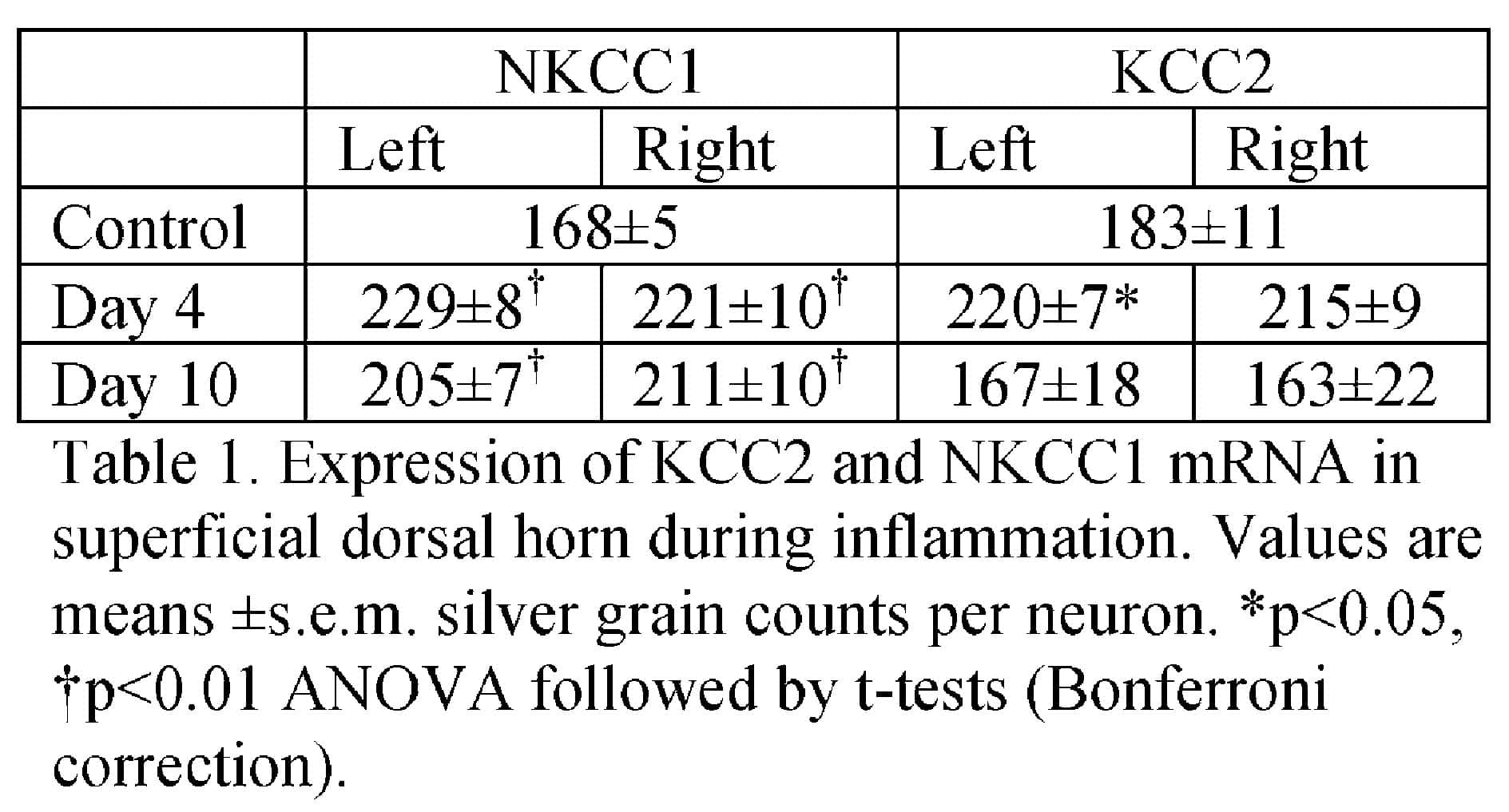Neuronal responses to the neurotransmitter GABA are determined by the chloride gradient across the plasma membrane. During development, GABA has depolarising actions, due to outward chloride movement through GABAA channels. As neurons mature, the chloride gradient is reversed by a switch in the expression of the cation co-transporter from Na-K-Cl cotransporter (NKCC1) to K-Cl cotransport (KCC2). This renders GABA inhibitory, as opening of GABAA receptors results in an inward hyperpolarising chloride current. We have investigated the expression of KCC2 and NKCC1 in spinal neurons during inflammation, as a possible mechanism of altered neuronal excitability.
Male rats (200-240g) were briefly anaesthetised (4 % halothane in oxygen) and injected intradermally around the left tibio-tarsal joint with 100µl of Freund’s Complete Adjuvant (FCA; M. tub. in mineral oil, made in house, 2.5µg/µl (w/v)). Controls were injected with the same volume of vehicle (n = 4). Animals were killed humanely by decapitation under halothane anaesthesia 4 days (n = 4) and 10 days (n = 8) after FCA injection. Expression of KCC2 and NKCC1 mRNAs was determined using in situ hybridisation in 10 µm transverse spinal cord sections, and was quantified by silver grain counting.
Rats showed significant ipsilateral paw swelling within 24 h of FCA injection, that was maintained for 10 days. On day 10 all rats also showed evidence of contralateral tibio-tarsal joint swelling. At 4 days, NKCC1 mRNA was significantly increased in superficial (layers I-II) laminae of the dorsal horn on both sides of the spinal cord (Table 1). Bilateral upregulation of NKCC1 was still significant at day 10. KCC2 mRNA expression was significantly upregulated in superficial dorsal horn at 4 days, ipsilateral to the inflammation, but returned to control values at day 10 (ANOVA followed by Bonferroni test). Neither NKCC1 or KCC2 mRNA levels were altered in deep dorsal horn (lamina IV-V). In acute and chronic inflammation it is possible that changes in spinal neuronal excitability can, at least in part, be attributed to an increase in NKCC1 expression, resulting in enhanced neuronal depolarisation to GABA.
This work was funded by the MRC, UK.

